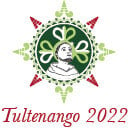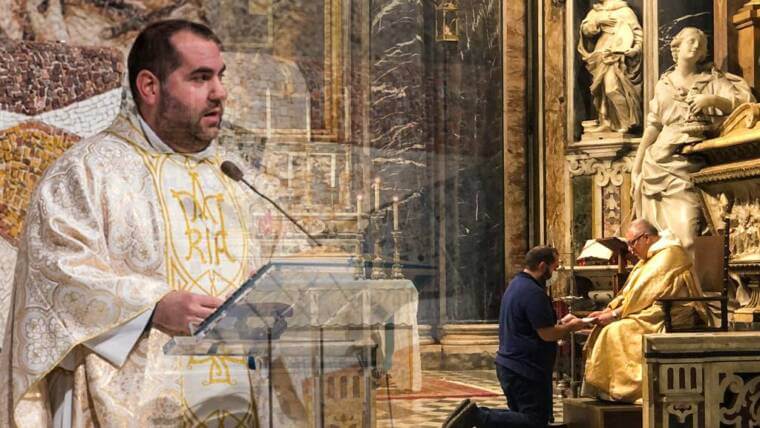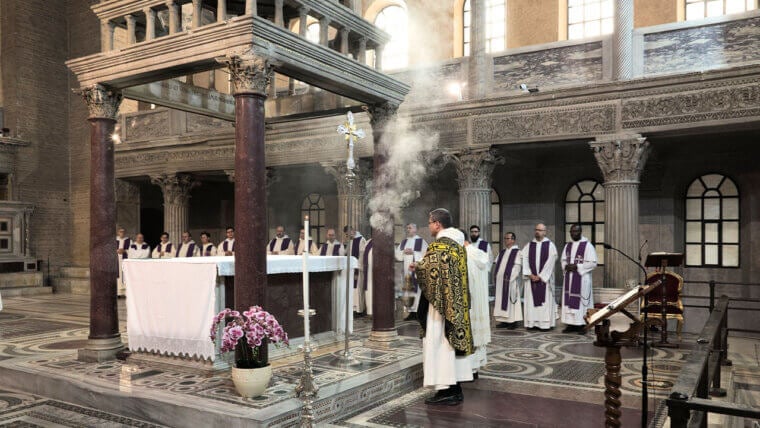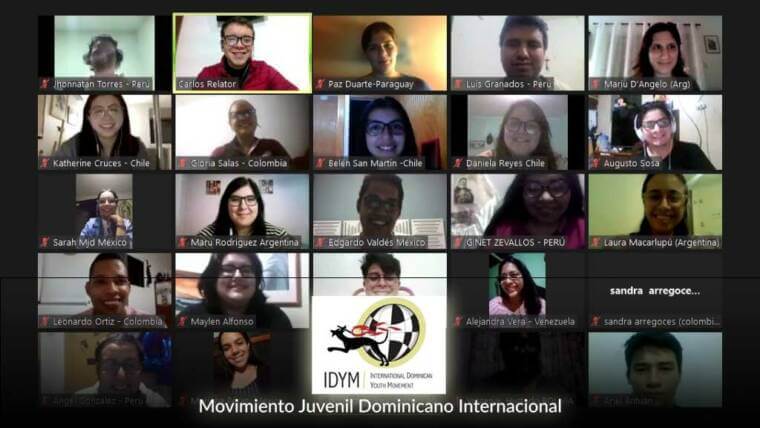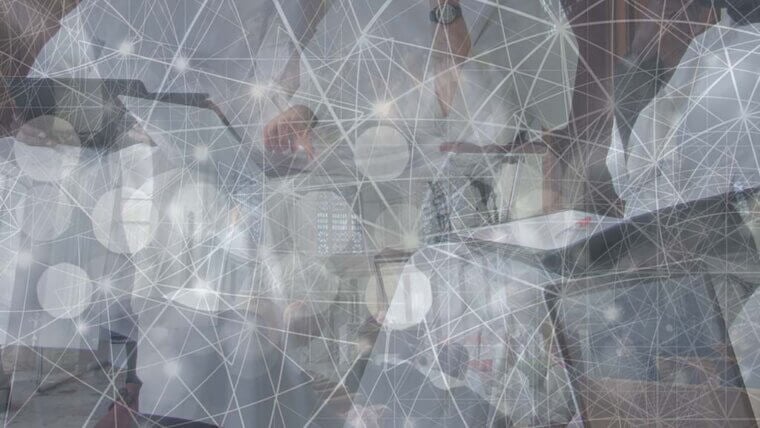A prodigious prayer, simple and great. A link between heaven and earth, but also the glue of the Christian community because it can unite the illiterate and the Catholic intellectual. The Rosary is what Pope Francis has called “a synthesis of the story of God’s mercy that is transformed into the story of salvation for those who allow themselves to be moulded by grace”.
The cult of the Rosary has ancient origins. The Rosary prayer originated in the 12th century when Cistercian monks, starting from the tradition of dedicating a crown of roses to the Virgin Mary, developed a special garland: a prayer that they called the Rosary, likened to a mystical crown of roses offered to Our Lady. But it was formalised in the late 16th century to commemorate a celebrated victory that Christians won over Muslims at the time of Ottoman expansionism: that at the Battle of Lepanto. Praying with the rosary means mentally constructing a crown of roses in honour of Mary and, at the same time, in honour of Christ.
And in the month dedicated to Our Lady of the Rosary, reflections on this beloved prayer also focus on its iconography, which becomes a privileged instrument of evangelisation.

Father Giovanni Calcara has been dealing with iconographic rarities of the Rosary for many years. He has concentrated intense research activity, aware of the importance of iconography as a means of evangelisation, and has dedicated an important volume to the subject entitled “The Rosary, school and synthesis of the Gospel”, which came out in two editions in 2019.
“The representation of Our Lady of the Rosary is very widespread, it happens all the time to see in churches or sanctuaries of the works,” he continues, “It is inevitable for a Dominican as for a Christian to be in love with the Rosary: loving it also means reciting it as a prayer, but also as a means of evangelisation, as St Dominic said: a prayer of devotion, which announces the mystery of Christ.
“As a Dominican,’ says Father Calcara, ‘it is natural that my studies, both theological and iconographic research, have come across the Rosary being the prayer not only dearest to Our Lady, but also investigating the topicality of her spirituality. Looking at the modern context, in which devotion is considered a private matter, we see a paradox: on the one hand, we say we live in a contemporary rational, agnostic context, but on the other hand there are so many acts of devotion that sometimes result in superstition. There is an episodic sentimental adherence linked to need, and unfortunately not everyone turns to God, to Our Lady, to the saints. There are many people throughout Italy who unfortunately turn to fortune tellers. But as the Pope says, precisely because man lives in this dimension of schizophrenia and lack of identity and planning, we need spirituality and to spiritualise, and to give a soul to our lives,
“The Rosary as set out,” he adds, “not only by the Dominicans represents the beauty of spirituality, contemplative and recitative. While we meditate on the mystery of Christ, through the recitation of the Hail Marys we make this river flow in the riverbed of meditation on the mystery of Christ, so that at length this river can smooth out even the stones, turning them into pebbles”.
According to Father Calcara, “the Rosary has great relevance today, if we know how to explain it. If we have reduced the Rosary to a recitation for old ladies before Mass, people do not understand and you cannot appreciate something that you do not know, such as the spirituality of the great saints of the Church. The problem,’ he concludes, ‘is also of us priests, who do not know how to make sense of the richness of what the Holy Spirit has inspired over the centuries, and in all religious families’.
The subject of Father Calcara’s most recent research is a work by Vincenzo da Pavia (1540), Chiesa San Domenico, Palermo. ‘The work,’ he explains, ‘contains various themes: the depiction of the mysteries, to be illustrated to the people who could not read; St Dominic and St Thomas Aquinas, the patron saints of Palermo St Christine and St Nymph’. And again, by the Granada School (attr.) 18th century, the depiction of the Souls in Purgatory, Santiago Apostle Parish, Santiago de la Espada (Spain). “A work – this one – that encompasses the devotion of Our Lady of Mount Carmel and Our Lady of the Rosary interceding for the Holy Souls in Purgatory, and the presence of St. Francis of Assisi. According to Our Lady’s promises to Blessed Alain della Rupe, “all those who spread the devotion to the Rosary will be preserved from the pains of Purgatory”.
Father Calcara’s iconographic research also focuses on a work by Giambattista Tiepolo (1696-1770), Venice St. Dominic ‘institutes’ the Rosary: the Virgin Mary with predilection, from Heaven, looks down on St. Dominic who ‘gives’ the Rosary beads to a crowd of simple, humble and poor people. And, finally, an Anonymous, 15th century, Regional Museum of Messina, Madonna of the Rosary: “The Rosary beads, instead of being given to St. Dominic, are given by the Virgin Mary to a Pope (perhaps St. Pius V), almost as if to signify that the prayer belongs to the whole Church, because it is considered to be of “divine origin” and therefore “salutary” for the salvation of souls”.
And in the words of Monsignor Filippo Remondino, who was in charge of Father Giovanni Calcara’s iconographic research: “Works such as this and similar ones make it possible to overcome the risk that many memories and documents, written, oral, material, are lost or dispersed. From the prodigious prayer of the rosary, a simple and great prayer that unites the illiterate and the Catholic intellectual, not only does a history of devotion unfold, but also a socio-cultural history. There is the symbol that interprets the event and the event that makes the symbol a growing motif of identity and mission’.
by Maria Rita Galati
Into “Maria con te”, the marian weekly magazine, published by Editrice San Paolo, n. 40 of October 2, 2022.

